[Purpose] The purpose of this study was to predict winning percentage in the Korean Basketball League(KBL) by applying the possession concept. [Methods] The model to estimate possession was utilized by formula used in NBA(National Basketball Association). Data consist of 20 seasons of the KBL (1997-2017). For data analysis, multiple regression analysis, Fisher’s Z transformation and stepwise multiple regression analysis were performed using SPSS 22.0. [Results] The result indicated that average team stats per possession had more explanatory power in predicting the KBL teams’ winning percentage than average team stats per game. The most important factor for winning in the KBL was defensive rebounds and followed by 2-point field goal percentage, steals, 3-point field goal percentage, free throw attempts, turnovers, offensive rebounds, blocked shots, free throw percentage, and assists. The results of this study provided fundamental information for the data analysis of Korean basketball games. It might be useful for basketball coaches to manage and instruct their teams. [Conclusion] Practical implications and future research direction were also suggested.

This study has analyzed 33 domestic games and 26 overseas games by targeting women curling teams of home and abroad, and looked into what main performance variables are, how level differences of domestic team appear, and from which variables differences between winning team and defeated team come out in overseas teams. Also, main strategies has been suggested that are used most commonly for kick-off offense and latter offense, blank strategy in order to prepare countermeasures, and digital media DB has been constructed that can utilize proper countermeasures easily and simply, and a model has been proposed for predicting victory/defeat. To accomplish such goal, a variance analysis has been carried out by dividing domestic teams into each level after calculating frequency and ratio with SPSS18.0, and t-test analysis has been carried out by overseas teams. Also, the accuracy of victory/defeat classifications has been suggested by using an artificial neural networks method. As a result, a lot of technical proficiency differences have appeared among Class A(upper rank), Class B(middle rank), and Class C(lower rank) in domestic teams. The ‘Guard’ which is an aggressive variable has turned out to be used more in upper and middle teams than in lower team, and the ‘Tab Back’ has been used more in upper rank than in lower rank. Furthermore, regarding the average comparison on victory/defeat in international games, victory teams have more significant difference(p<.05) than defeated teams in accuracy of shot techniques and strategy accomplishing abilities, and victory teams have been turned out to use less ‘Drew’ and more ‘Take’ than defeated teams significantly in Drew and Take’ technique variable. Finally, the accuracy of a prediction model has been 91.7% for learning and 92.9% for the test result to predict the victory/defeat in international games through the artificial neutral network analysis. The prediction accuracy of domestic games was 81.0% for learning and 71.4% for the test.


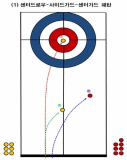

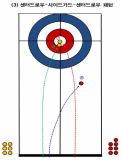
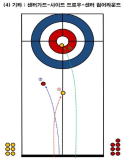

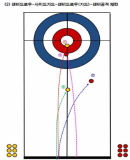
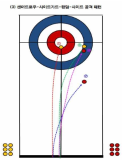
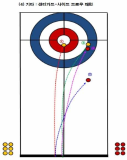
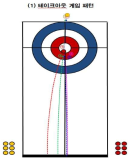
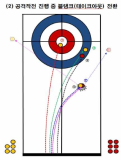

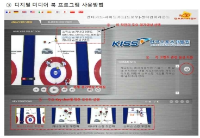


This study has been conducted to develop methods and techniques for the analysis of data related to baseball performance using the winning and losing games. The purposes of the study were to examine differences of athlete performance for semi playoff, playoff, and Korean professional baseball series and to develop optimal forecasting model for the short term series. Data used in the study were taken from Korean professional baseball association. Three data sets including semi play off from 1982 to 2012, play off from 1989 to 2012, and Korean series from 1982 to 2012 were used. To compare athlete performance by winning and losing games for short-term series t-test was applied. This study created new parameters by weighted value through the equalization process to calculate skill related variables as a predicted variable. Three predicted models such as discriminant, binary logistic regression and artificial neural network models were developed to clarify the suggested models. The results showed that the number of significant parameters increased as the series continued. In particular, a variable related to error was added as a significant variable at the Korean Series. A third base hit in the play-off and a second base hit were also added as significant parameters in the play-off and the Korean series, respectively. In addition, W/L a major variables affecting a given technology area, the pitching PO, PO, the inertia, KS, the pitching, respectively. An artificial neural network model was finally selected with the highest accuracy and lowest input of estimated parameters in the semi play-off. In the play-off, artificial neural network model that applied technical area parameters by specialist criteria had better accuracy rate than two others. In the Korean series, artificial neural network model that created estimation parameters by applying all parameters was chosen as the final model. When the overall accuracy level of semi-play off, play off and Korean series was figured out, binary logistic regression model had higher accuracy of classification than discriminant model, but artificial neural network model had the higher accuracy of classification than binary logistic regression model.


PURPOSE This study aimed to identify the lower limb muscle activity based on direction prediction presence or absence and gender during side cutting in healthy college students. METHODS The study participants included 14 healthy males and females (8 males; 6 females). All participants ran at full speed for a distance of 12m, and side-cutting was carried out at 45 degrees in a randomly indicated direction and in a fixed direction. Simultaneously, data regarding vastus medialis, vastus lateralis, semitendinosus, and biceps femoris muscle activity of the dominant leg were collected using an electromyography sensor, and data regarding vertical acceleration were collected using an inertial sensor attached to the pelvis. A sync webcam was used for obtaining the initial contact of side cutting and the stance period time. During the 10 milliseconds (pre-activation) prior to the initial contact and 50% of the stance phase (loading phase), vastus medialis, vastus lateralis, semitendinosus, and biceps femoris average muscle activity and hamstring to quadriceps ratio included as variables. RESULTS During the pre-activation and loading phase, the vastus medialis muscle activity of the male group was higher in the unexpected condition than in the expected condition. Furthermore, hamstring to quadriceps ratio was confirmed to be lower under unexpected condition compared to under expected condition during on loading phase. CONCLUSIONS The study results suggest that the risk of anterior cruciate ligament injury may increase with side cutting under unpredictable conditions. It is expected to provide useful information for identifying factors related to knee injury in the general population.

Purpose The purpose of this study was to explore the optimal model for winning medal on vault event of men's gymnastics. Specifically, decision tree analysis was used to explore, first, for the optimal conditions for qualifying top 8th player that have high possibility into final round, and second, for the optimal model for obtaining the medal of the vault event. Methods Data were collected for five official competitions (Olympics, Asian games, and International championship, etc.) organized by the Federation of International Gymnastics (FIG) from 2013 to 2016. In this study, the data of 626 vault players were collected. Also all of these players performed 921 vault skills for qualifying round or final round. Five predictor variables for estimating for qualifying into the final round and for obtaining the medal of the vault event were selected; nationality, difficulty score, acting score, additional penalty score, final score. Results The results is as follows. Overall, it was confirmed that the optimal model for entering into the final round was the difficulty score of vault event. The optimal model for entering into the final round estimates 81.2% when condition would be the 5.6 or higher of difficulty score and 8.6 or higher of the acting score. The optimal model for winning medals was 86.7%, which means that when condition would be the 6.0 or higher of difficulty score and no additional penalty score. Conclusions This models can be used as a basic data for establishing a strategy for medal acquisition of vault event of gymnastics.





This study classified and analyzed groups of spectators of professional baseball through market segmentation and predicted the sports consumer behavior by using artificial neural networks model and logistic regression model. The results of hierarchical cluster analysis, K-means cluster analysis, cross-tabulation analysis and one-way ANOVA using PASW 18.0 and AMOS 18.0 suggest five clusters of consumer segments and by using Modeler 14.1, artificial neural networks model was made to predict the data. By using artificial neural networks model and logistic regression model, hit ratio was grasped about the spectator satisfaction and future consumption behavior. The results are as follow: The hit ratio were high in ‘cluster 5’ for artificial neural networks model(spectator satisfaction: 71.3%, future consumption behavior: 99.3%) and logistic regression(spectator satisfaction: 71.8%, future consumption behavior: 96.5%). Furthermore, cross-tabulation and one-way ANOVA was performed to understand the cluster's characteristic which had highest hit ratio about the spectator satisfaction and future consumption behavior. And through this marketing strategy was suggested.

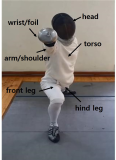
Purpose The purpose of this study was to establish the differences of anticipating accuracy and confidence according to fencing expertise and spatial occlusion region. Methods For the purpose of this study, the anticipation ability of 6 high-level fencing players and 6 low-level fencing players were analyzed. All subjects performed the 60 tasks of anticipating the attack positions(thorax, thigh, toe) from observing the fencing video screen using spatial occlusion technique. The spatial occlusion technique was used in 6 particular body of opponent’s movement. For statistic analysis, data was analyzed through independent T-test measure. Moreover, Paired t-test were used as follow-up analysis. Results The results of the study were as follows: In terms of accuracy anticipation, the main effect of expertise was significantly different. Specifically, when the spatial occlusion technique was applied in head, left leg, arm, and a foil, the accuracy of anticipation was significantly different. Moreover, comparing with no-occlusion condition, anticipation accuracy decreased when spatial occlusion technique was applied in arm and foil. In terms of confidence, there was no significant difference between level of expertise. Conclusions In order to effectively anticipate the opponent’s movement in fencing sports, it is necessary to focus on the visual cues of arm/shoulder, and the foil. Especially, focusing on the foil movement might provide the core informations on anticipation ability.

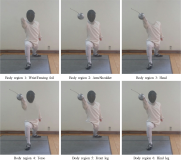
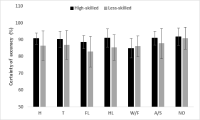

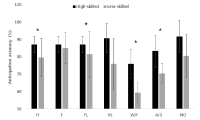

The present study has been carried out with a purpose of a long term estimation for the body size and BMI (Body Mass Index) of Korean children and youth using ARIMA, a time series model. In order to select an estimation model for the optimum time series, among the time series analysis method of SPSS22.0 statistic programs, a multivariate ARIMA (p,d,q) model has been selected that has an input series (physical education facility, time spent for physical education, animal source foods, GDP deflator, animal source food intake ratio), using annual average data of height, weight, and BMI data from 1965 to 2015. Among the several optimal measurements in ARIMA model with estimation variables, an optimal RMSE-based model (RMSE: Root Mean Square Error) has been selected. Using this model, the estimation model and estimated values of children’s height, weight, and BMI have been suggested for each age group. The results are as the following. The trend estimation of height follows a logistic curve, with both male and female groups showing increasing trends. The weight has a trend of increasing ratio higher than height. BMI also shows a trend curve similar to weight. The estimation model has been mostly ARIMA(0,1,0). In particular, the average BMI has been estimated as 22-23 for male students in 6th, 8th, 9th, 11th and 12th grade in 2030. This indicates the recent increasing obesity as children and youth occupy most of daily time for play culture that is far from physical activities, such as computer games, smartphone games, and video games at home.







This study examined whether or not regulatory focus can predict motivation level. 141 Ssireum player completed Korean self-regulatory focus of Hong(2005)assessing their self-regulatory focus, and Behavioral Regulation in Sport Questionnaire(BRSQ) of Lonsdale, Hodge & Rose(2008) accessing motivation level based on self-determination theory. Artificial neural network analysis was utilized to find motivation factors that determine the regulatory focus, and the option was multi-layer perception. The result represented promotion focus predicted intrinsic motivation. Also, the prevention focus predicted extrinsic motivation. This result provided that self-regulatory focus can predict player’s motivation level and promotion focus related to intrinsic motivation.


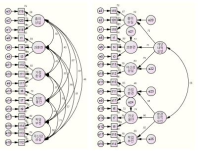
This study was to identify the structure of sports drop-out of athletes considering cognition, emotion and situational motivation, and to develop the measurement of sport drop-out motivation. For this, the validity of internal structure and relationship with overall drop-out intention were examined by targeting 689 individuals and team athletes. The results were as follows: Sports drop-out motivation was verified two hierarchical structure. One is individual internal factor including loss of interest, overtraining, loss of confidence, the other is environmental external factor including home environment, career anxiety, academic slump. The female players have higher drop-out motivation level than male players, and the drop-out motivation was shown the difference by level of school. Also, loss of interest and confidence weres to predict overall drop-out intention well. Therefore, this study was found this measurement was able to reliably predict drop-out motivation among players.
